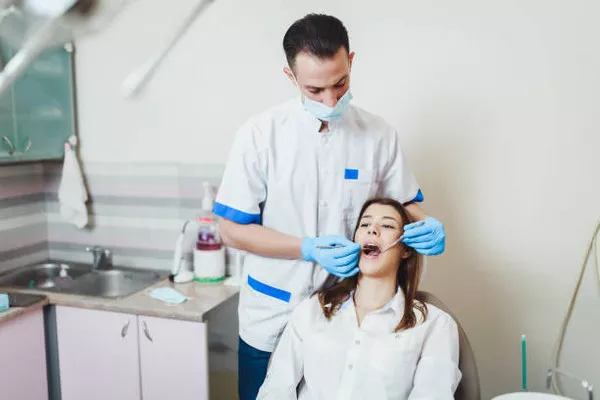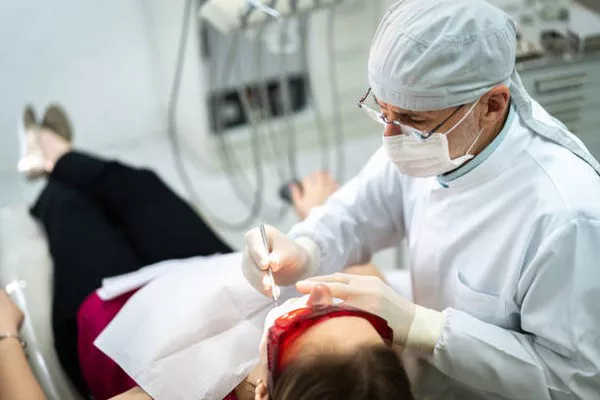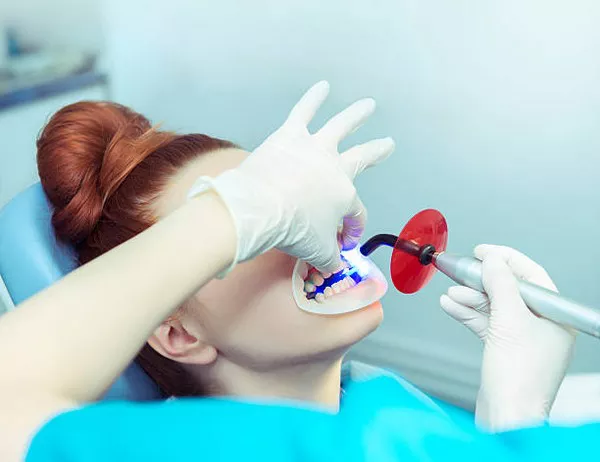You wear braces. Why burn months ‘wages?
In first-tier cities, the cost of orthodontics is usually 2W-8W.
God, why does a brace cost so much?
Am I being slaughtered?
!
The funny thing is, when you spend tens of thousands of dollars on Chanel, the feeling is completely different: you hurt your wallet, but it’s worth it, even if you know the bag cost only a few thousand dollars.
The difference is because you know the Chanel brand and what it is worth, and you can enjoy the satisfaction of the goods at the moment of payment.
And orthodontic, it is ignorant, the effect of correction can not be immediate.
Simply put, Chanel sells designers’ inspiration, creativity, and brand value;
Orthodontics, by contrast, sells a doctor’s knowledge, time, and superior skill.
What is 1 orthodontic?
In simple terms, orthodontics affects the alveolar bone by using a mechanism of destruction and regeneration, applying a constant and appropriate force to the teeth, allowing them to move slowly and eventually align.
Buck teeth, ground wrap, deep overbite and so on, if you are one of these, more or less will have the following resonance.
Can’t laugh out loud, every time must hide.
He was too conscious of his side face to take a good picture.
Envy those around the teeth neat and good-looking friends.
I feel good where, but mouth shape.
Orthodontics isn’t just about lining up your teeth.
There is a very famous book in the orthodontic field called “The Unity of Science and Art”, which says that orthodontics is not only a scientific consideration, but also has many artistic and aesthetic considerations.
Aesthetic considerations here refer to personalized orthodontic aesthetics designed to make your face and smile more beautiful and show the perfect smile curve.
We call it smile aesthetics.
Then think of yourself after orthodontics: white, straight teeth, smile whenever you want, and all you get are envious eyes.
If you’ve survived the horrors of orthodontics, what else wouldn’t you dare try?
Face shape improved, appearance level rose 50 percent, chasing their own people ranked outside the fifth ring.
Only the tooth row this is called the collar tooth, the tooth row at the same time considering the beauty, function, health and coordination (stability) this is orthodontic.
Beauty is to make you look beautiful.
The shape of your face is closely linked to your teeth and cannot be separated.
Your face will only look good if your teeth look good.
Function, in addition to the alignment of teeth, but also to adjust a good occlusal relationship.
A set of teeth that cannot be used properly, no matter how neat, is useless.
Simple?
Three months is enough to attach brackets to your teeth and wire your teeth together. This is called braces.
And to complete a perfect correction, a professional orthodontist may not be able to achieve the goal of a lifetime.
It took you two years to correct, but how many years did the doctor “correct”?
In Hong Kong, in order to obtain the title of orthodontic specialist, undergraduate students need to study for 5 years, after graduation requires 6 years of specialist training, and then to work for 2 years, which means a total of 13 years.
To complete the entire training, you need not only to be smart and diligent, but also to have a certain economic basis.
The average annual tuition is around 200,000 RMB.
Before you can become a professional orthodontist, you must first become a medical student.
Different from ordinary undergraduate courses, medical students’ undergraduate courses are five years, and the first three years are basically spent in school, four lines – teaching building, study room, canteen, dormitory.
Plus a PhD, at least five years.
By the time they graduate, most of them have become older young people, but they are still a newcomer in the orthodontic industry.
If you have a dental experience, you will find that dentistry is the most difficult of all departments to get an appointment, especially orthodontics.
Any good orthodontist is dedicated to the user and spends a lot of time reviewing the diagnosis, designing the plan, and following up the treatment.
But there are only 24 hours in a doctor’s day, and there are only so many users a year that a doctor can see, even if he or she is highly effective.
In the face of a large number of demand, the price of orthodontic treatment is somewhat high is reasonable, can be said to be rare for expensive.
The same metal car, domestic, joint venture, import prices why will be very different, because the hidden cost is not the same.
Now many patients do not accept the hidden costs of doctors, but orthodontist workload is extremely limited.
An orthodontist, if he does all the cases himself, will do 300 patients a year, which is the extreme limit.
3. How much knowledge should I learn to complete a correction?
Generally speaking, it is mainly the following points: 1, professional knowledge including three aspects (at least 10 years of time to learn) orthodontic knowledge of other stomatology professional knowledge of a large number of clinical knowledge 2, clinical psychology patients are not products on the assembly line, the doctor is not a machine in the factory.
Communicate with patients, understand the psychological changes of patients, clinical treatment must be injected with humanistic spirit, become a temperature of medical treatment.
3, aesthetic professional knowledge of orthodontics is to make you healthy and beautiful, which requires orthodontists have aesthetic expertise.
Different people have their own tastes.
Therefore, we need to understand the patient’s complaint and treat the patient according to objective aesthetic criteria while also referring to the personal needs and preferences of the supervisor.
It takes at least 10 years to master this knowledge.
4 Is orthodontic as easy as it looks?
Many people think that orthodontics is not a matter of wearing braces, what is complicated.
But in fact, you can take an examination of Tsinghua and Peking University, may not be able to do a correction.
In summary, the common correction process can be divided into the following 6 steps.
(1) the examination, medical history, oral analysis, establish archives (2) combined with patient complained of cases, time, beautiful, the economy, make plan (3) to prepare periodontal treatment, choose braces on orthodontic bracket (4), starting treatment, regularly visit (5) emergency response, adjust plan 6 end treatment according to the reality, wearing a retainer we take a few steps, for example.
Let’s start with the most overlooked initial diagnosis.
Examination before correction includes:
All previous medical history, medication history, history of allergies, oral history, social history, the whole body check condition assessment and mouths, oral hygiene, oral pathology, oral soft tissue examination, oral function analysis, and facial soft tissue, X-ray analysis, model analysis and so on, these are new analysis need, after preliminary analysis could also add some auxiliary examination…
You still don’t think the initial exam is important?
Look at the correction plan is how to design, is not as long as a glance can be waved down?
How to customize this correction plan contains too many factors. In short, it is to understand what effect the patient wants to achieve and predict the correction effect.
Correction is not up to the doctor alone.
The risk of treatment was evaluated according to the actual situation.
For example, after the X-ray film, the patient sees that the root of the tooth is very short, but he wants to solve the problem of the anterior teeth protruding forward and backward, or the gingival smile needs to be pushed down, which is a particularly high risk.
This requires a large number of data parameters and clinical experience to support, the need for caution is like a successful rocket launch, there is no room for error.
How to customize this correction plan contains too many factors. In short, it is to understand what effect the patient wants to achieve and predict the correction effect.
Correction is not up to the doctor alone.
The risk of treatment was evaluated according to the actual situation.
For example, after the X-ray film, the patient sees that the root of the tooth is very short, but he wants to solve the problem of the anterior teeth protruding forward and backward, or the gingival smile needs to be pushed down, which is a particularly high risk.
This requires a large number of data parameters and clinical experience to support, the need for caution is like a successful rocket launch, there is no room for error.
And finally, what you think is the “easiest” bracket.
The bracket bonding process is not complicated, but there is one key step that is invisible to the patient: bracket positioning and application of force — precise positioning based on the doctor’s experience, which is directly related to the final correction effect.
Bracket positioning should be considered from three dimensions: proximal and distal, vertical, and its own Angle — it needs to be accurate to the millimeter, not just glued on.
The whole process, the doctor pays a lot more than you think.
Behind each correction is the calculation of precise data, physiologic considerations and decades of clinical experience.
It takes three hours for the initial bracket bonding and final disassembly, one hour for the model perfusion force analysis and design, and half an hour for each return visit. Taking 20 review treatments as the standard, the average cost per hour is cheaper than the cost of tooth extraction.
Let’s go back to why corrections are so expensive.
In your eyes, the composition of correction costs looks like this.
And in fact, the true composition of correction costs is this.
It’s what you ignore that’s the most valuable part of the correction and if you’re willing to pay for the tangible, not the intangible, it’s not fair to doctors.
To put it another way, if you were an artist and I wanted to buy your painting, but I was only willing to pay for the paper and paint, would you?
Orthodontics is the same thing.
Of course, we are not saying that correction is not expensive, but that it is valuable.






























